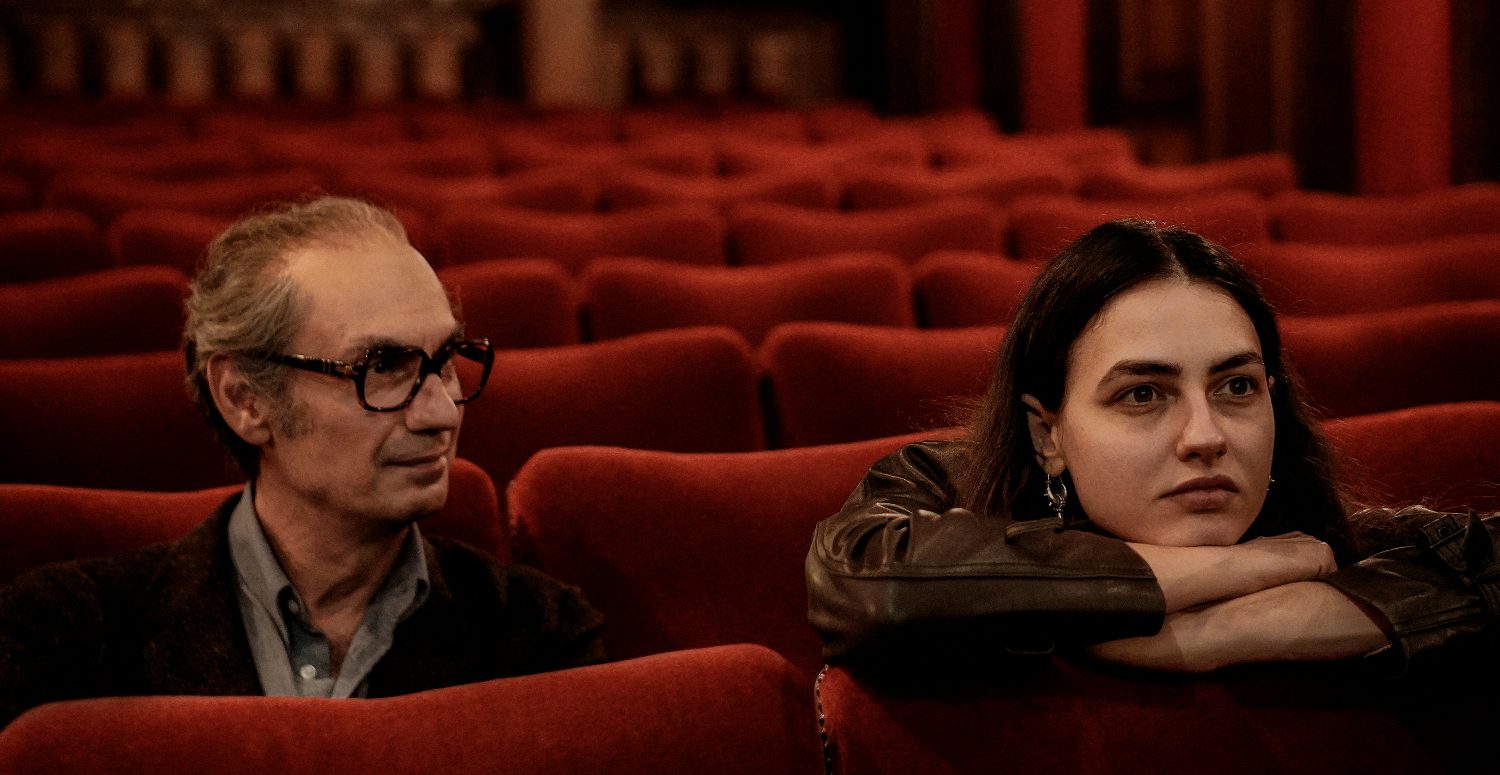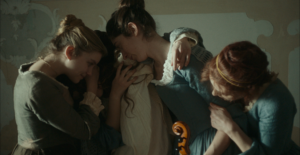Prima La Vita
Il Temp che ci Vuole
(The Time it takes)
2024/2025

FR EN
Avec « Prima la vita », le dernier film de Francesca Comencini, pas de fresque familiale puisque sœurs et mère sont exclues de l’écran. Il s’agit de montrer Luigi Comencini dans son travail, sur les tournages, et surtout la relation qu’il a tissée avec sa fille, lui, le père aimé, affectueux et bienveillant. Fabrizio Gifuni, Romana Maggiora Vergano et Anna Mangiocavallo interprètent ainsi avec justesse et sensibilité respectivement la figure du père et celle de sa fille réalisatrice et enfant.
A travers ses titres français et italien « Prima la vita » – d’abord la vie – et « Il tempo che ci vuole » – le temps qu’il nous faut – le film reflète deux sens et deux temps de la narration : celui de la petite fille toute en admiration pour son père et celui de la jeune femme qui doit se construire face à un tel modèle. L’histoire démarre avec le tournage des aventures de Pinocchio dont la fable sert de métaphore filée tout au long du film : de la marionnette en bois construite par Geppetto au petit garçon en chair et en os, ou de la petite fille à la réalisatrice. Les dents de la baleine symbolisent ainsi aussi bien les monstres effrayants de l’enfance que ceux de l’Histoire de l’Italie à cette époque. C’est là toute la richesse de la construction de ce film qui rend un bel hommage à Luigi Comencini, le grand cinéaste, et un bel hommage au père, l’homme remarquable. C’est un très beau film à la fois émouvant et rayonnant.
Marie Caruana
{English below & Italiano alla fine}
With “The Time it Takes”, Francesca Comencini’s latest film, this is not a family portrait, as sisters and mother are excluded from the screen. Instead, it shows Luigi Comencini at work, on set and, above all, in his relationship with his daughter, the beloved, caring and kind father. Fabrizio Gifuni, Romana Maggiora Vergano and Anna Mangiocavallo all portray respectively the father figure and his filmmaker and child daughter, with sensitivity and delicacy.
Through its French and Italian titles, “Prima la vita” – life first – and “Il tempo che ci vuole” – the time we need – the film conveys two aspects and two times of the narrative: that of the little girl in admiration of her father, and that of the young woman who has to grow up alongside such a role model. The story begins with the filming of Pinocchio’s adventures, whose fable serves as a metaphor throughout the film: from the wooden puppet built by Geppetto to the little boy in the flesh, or from the little girl to the director. The whale’s teeth then represent the frightening monsters of childhood, as well as those of Italian history at the time. This is the wealth of the film’s narrative, which pays homage to Luigi Comencini, the great filmmaker, and to the father, the remarkable man. It’s a beautiful film, both moving and illuminating.
M.C.
(Translated by R.S.)
ITALIANO
Con “Il tempo che ci vuole”, ultimo film di Francesca Comencini, non si tratta di un ritratto di famiglia, poiché sono escluse sorelle e madre dello schermo. Mostra invece Luigi Comencini nel suo lavoro, durante le riprese, e soprattutto il suo rapporto che ha creato colla propria figlia, lui che è un padre amato, affettuoso e benevolente. Fabrizio Gifuni, Romana Maggiora Vergano e Anna Mangiocavallo interpretano con giustezza e sensibilità rispettivamente la figura paterna e quella della sua figlia regista e bambina.
Attraverso i suoi titoli in francese e italiano, “Prima la vita” e “Il tempo che ci vuole”, il film trasmette due sensi e due tempi della narrazione: quello della ragazzina ammirativa del suo padre e quello della giovane donna che si deve costruire di fronte a un tale modello. La storia inizia colle riprese delle avventure di Pinocchio, la cui favola forma una metafora estesa per tutto il film: dal burattino di legno costruito da Geppetto al bambino in carne ed ossa, o dalla bambina al regista. I denti della balena simboleggiano così contemporaneamente i mostri spaventosi dell’infanzia e quelli della Storia d’Italia dell’epoca. Qui si trova tutta la ricchezza della costruzione di questo film che rende omaggio a Luigi Comencini, il grande cineasta, e che rende omaggio al padre, l’uomo eminente. È un film molto bello, nel contempo commovente e radiante.
M.C.
(Tradotto da A.C.)

